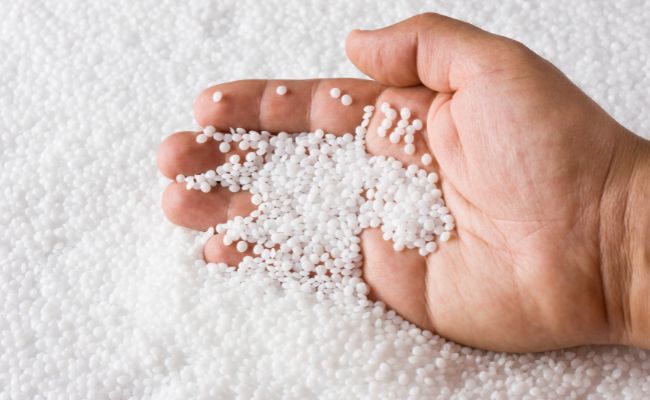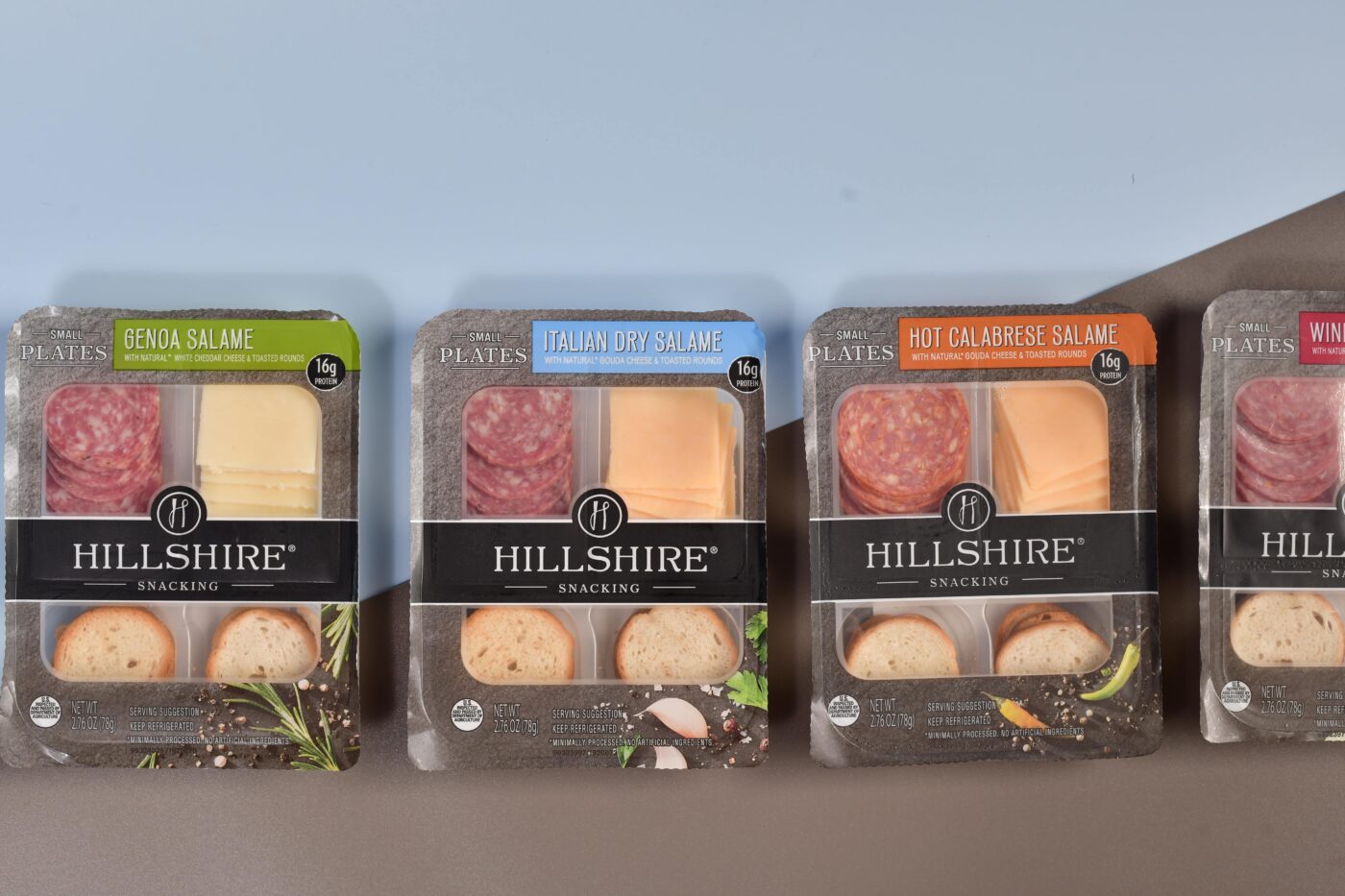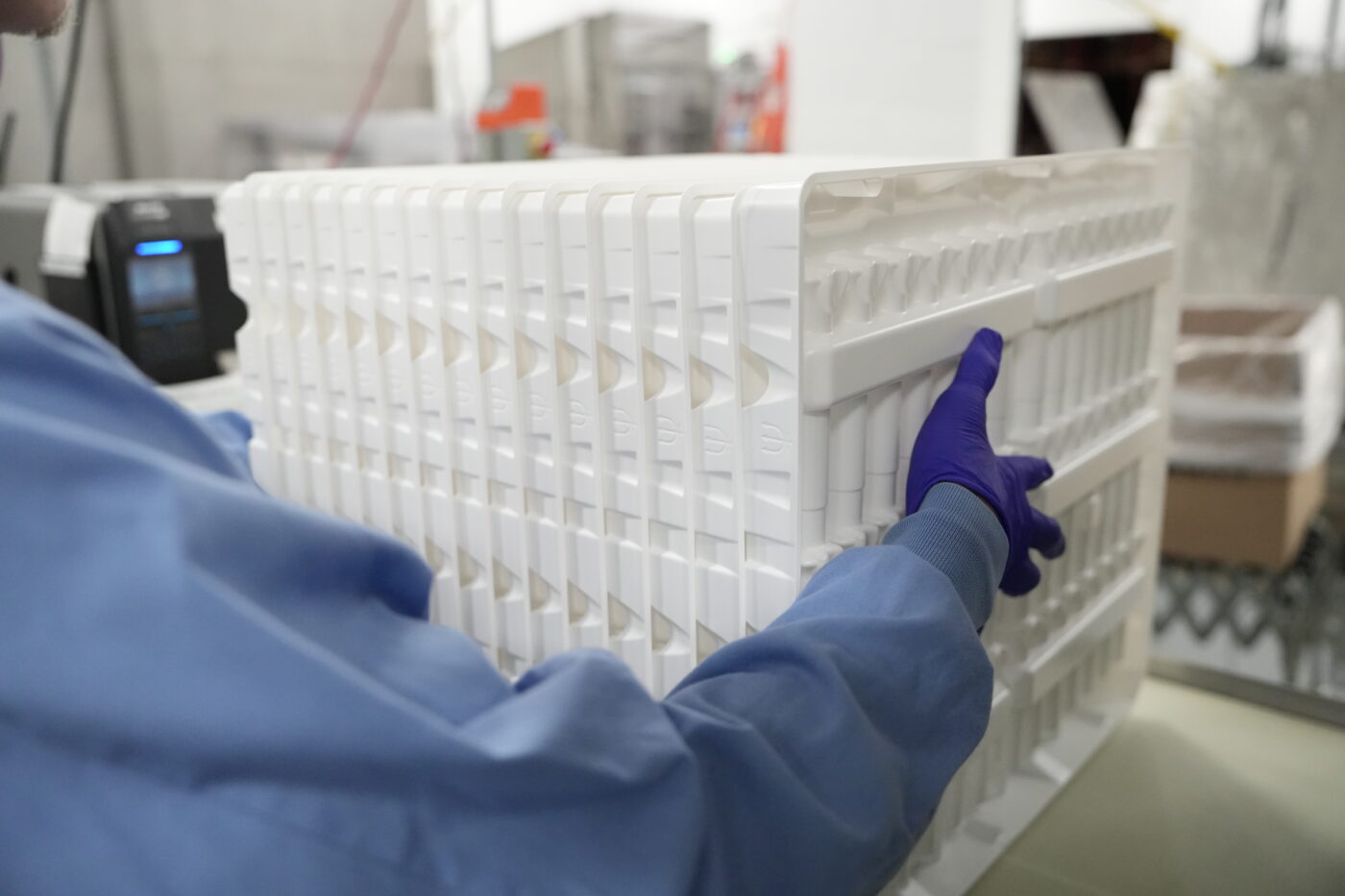
Welcome back to PI Circular! In this edition, we will take a deep dive into the Post-Consumer Recycled (PCR) PET material market for rigid packaging, like thermoforms.
What is Happening with PCR PET?
The demand for the use of post-consumer recycled material in packaging is accelerating, fueled by brand commitments and legislative mandates. The leading global beverage brands have made significant commitments to add PCR PET material to their bottles. These PCR commitments are shown in the chart below courtesy of NAPCOR using data from the Ellen MacArthur Foundation. PCR targets are shown in the dark blue bars of the chart, with current levels in grey. The volume magnitude is shown in orange with the scale on the right-hand side.
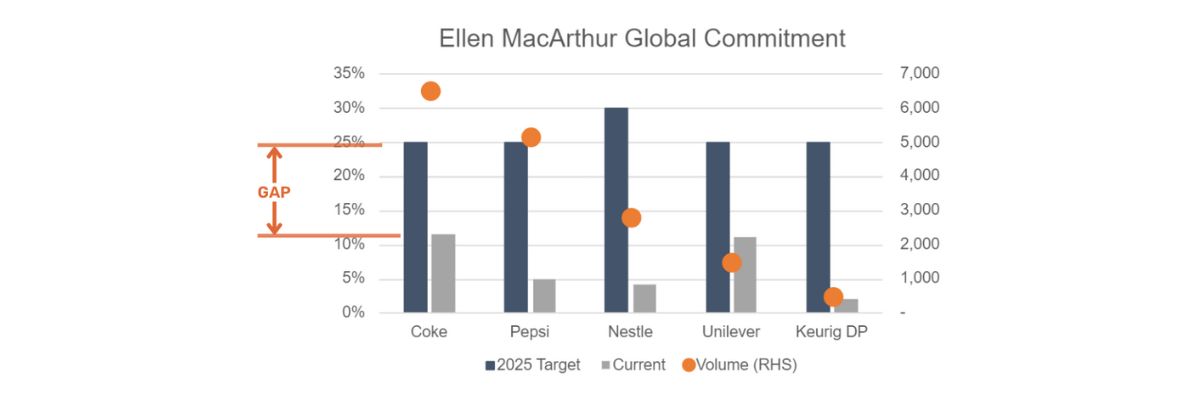
The benefits of PCR are numerous. Introducing PCR into packaging keeps valuable material out of our landfills so it can recirculate in our economy. The demand for PCR fuels the economic incentives our recycling industry needs to operate. Outside of the economic benefits, using PCR significantly lowers the carbon footprint of a package and reduces the use of virgin materials. Brands are also discovering that using PCR can enhance brand equity with sustainability-minded consumers.
Competition for PCR is fierce. Packaging applications are competing with other industries over the limited PCR PET supply, given its utility for a wide range of end-market applications. Historically, the lion share of PCR PET has been consumed in fiber and strapping applications. These industries are also under significant pressure to increase the amount of PCR in their products. In positive news for packaging end-markets, packaging surpassed fibers as the largest consumer of PCR PET in 2020 for the first time ever according to NAPCOR. Also, it is estimated that thermoforms are the largest consumer of recycled PET material recovered from California’s container redemption system.
The bottom line is the existing supply of PCR PET is insufficient to meet demand. Recent trends indicate an upward pressure on pricing for bales of recovered PET items. Recyclers purchase these bales from Material Recovery Facilities (MRFs) and convert them into usable forms of PCR. The escalation in PET bale pricing is evident in the following chart courtesy of recyclingmarkets.net:
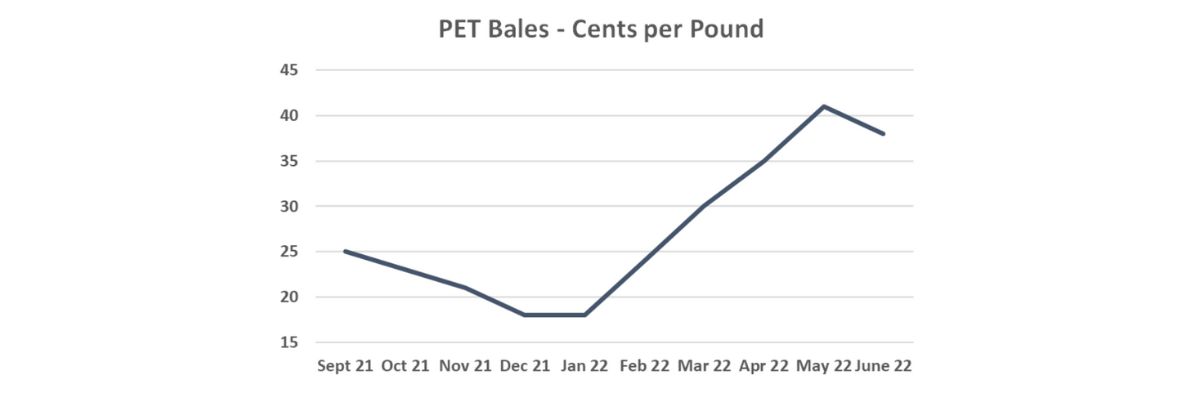
The escalation in bale pricing, along with processing required to convert PET waste into a recycled material suitable for food grade packaging applications, has widened the price premium for PCR compared to virgin materials. This trend is a headwind in the short-term for brands seeking to maximize the amount of PCR in their packaging. However, these profitable conditions are spurring investments which will lead to additional capacity in the long term. Gains in collection are needed to coincide with investments in sorting and reclamation to maximize the impact on the market.
Plastic Ingenuity remains committed to promoting the use of PCR materials in our thermoforms. Please reach out to us if you would like to learn more about the use of PCR in your packaging.
Have you been following our Good Information video series? The mission of “Good Information” is to provide a concise understanding of a topic related to circularity. Sticking to this edition’s PCR topic, you may find our video explaining the nuances of the terms “recycled” and “recyclable” informative. Please enjoy by visiting the link below and feel free to share!

Colorado recently became the 3rd state to pass an Extended Producer Responsibility bill: EPR Bill in Colorado Signed. The bill calls for companies that sell packaging and some printed paper to consumers to join a Producer Responsibility Organization (PRO). The PRO will fund and manage a statewide recycling system through member dues.
It is easy to be confused by the current high degree of legislative activity. The Sustainable Packaging Coalition created the following tool to help track state-level EPR activities: EPR Guide.

The recycling rate in 2020 for PET beverage containers.
The recycling rate needed to achieve 25% PCR in all beverage containers.
Investment needed in reclamation capacity to achieve this goal.
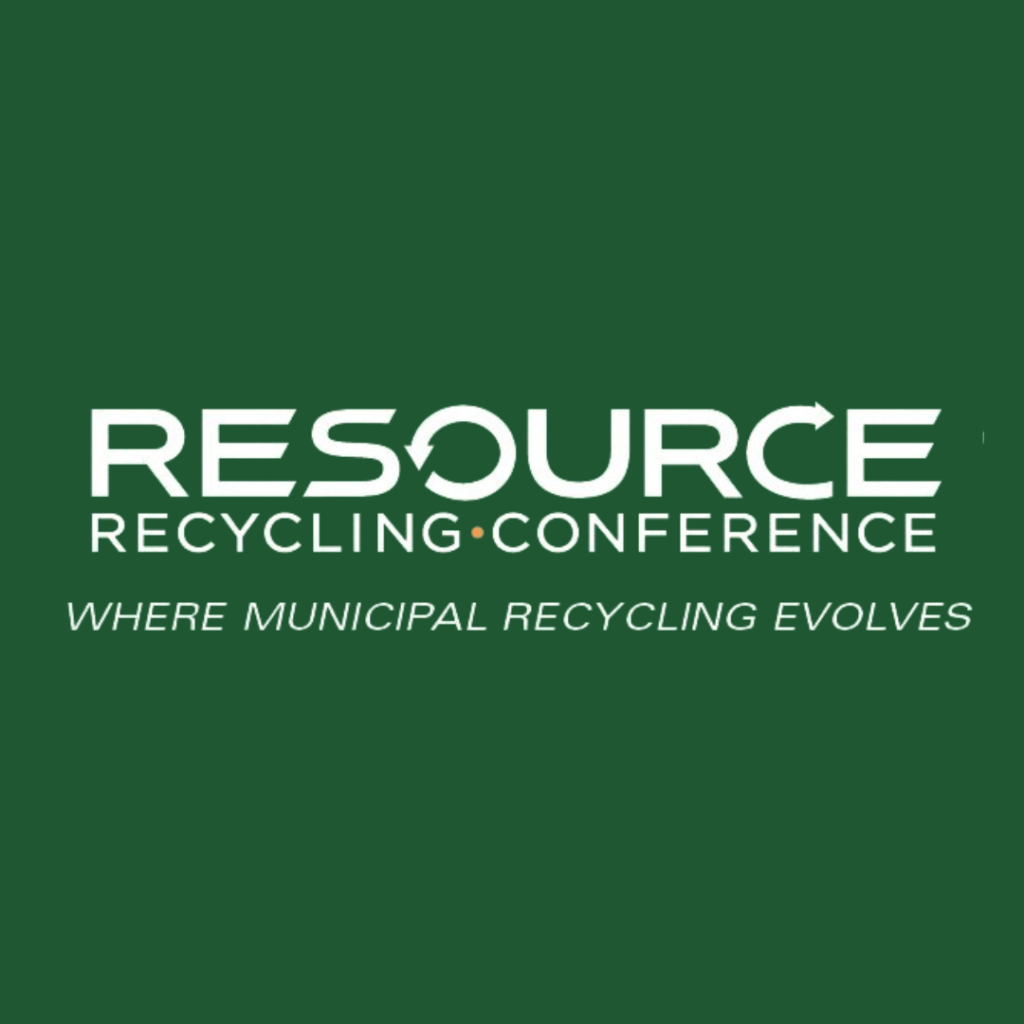
We look forward to attending the Resource Recycling Conference in Austin, TX on August 15-17th. The meeting is a fantastic forum for CPGs, packaging creators, and recyclers to collaborate on efforts to advance recycling. We hope to see you there.




